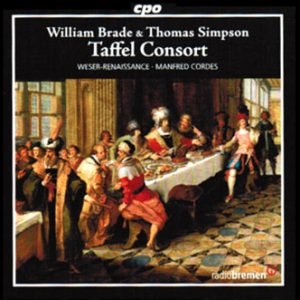Musik an den Höfen der Weserrenaissance
Works by William Brade (1560-1630) & Thomas Simpson (1582-1628?)
WESER-RENAISSANCE BREMEN
Manfred Cordes
cpo 999 952-2
TT: 72:00, Veröffentlichung 2013

Works by William Brade (1560-1630) & Thomas Simpson (1582-1628?)
WESER-RENAISSANCE BREMEN
Manfred Cordes
cpo 999 952-2
TT: 72:00, Veröffentlichung 2013
A duodecimo prince was only rarely able to gain such permanent notice within a single generation as was the case with Count Ernst III zu Holstein-Schaumburg in Bückeburg around 1600. Inspired by music and open to cultural patronage, his residence towered above the average attainments of other principalities. For this program we have selected two English composers from the numerous musicians-composers active during the great period of flourishing at the court of Ernst III, drawing on the rich sources of their music to illustrate the wide spectrum of instrumental performance opportunities available at the time. William Brade and Thomas Simpson left England for the Continent, evidently never to return home. They succeeded in more greatly familiarizing the Continent with the English tradition of instrumental playing and introducing their own stylistic features. Their compositions ranging from four to six voices reflect a transition in instrumentation practice. The Elizabethan Age favored an upper voice and four lower instruments. On the Continent the bright sound of two upper-voice instruments engaging in dialogue was especially preferred for dance music. The contrasting design of pavan and galliard pairs was a popular choice, but pieces such as the ballet, intrada, canzona, and mascarada are also found. Brade’s five printed collections, a handsome figure for his times, consist exclusively of dances composed or arranged by him and demonstrate his success both as an instrumentalist and a composer. He is the first English composer for whom we have an extant canzona and a solo piece for violin.